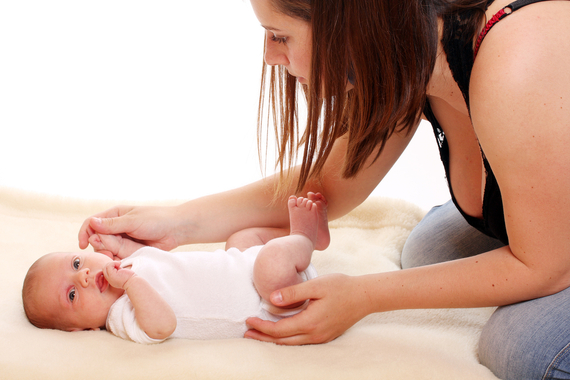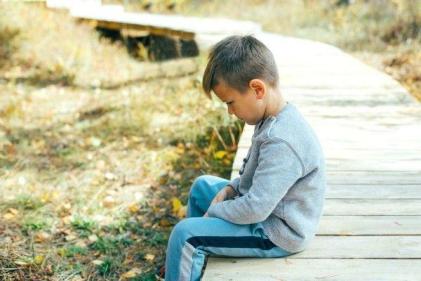 There are plenty of obvious changes to your body after pregnancy and childbirth, but there may also be a few that you aren’t even aware of.
There are plenty of obvious changes to your body after pregnancy and childbirth, but there may also be a few that you aren’t even aware of.
One of these is the dramatic changes that have taken place in your uterus. By the time your child arrives, your uterus is 15 times its original weight (not including its contents!) It also has a capacity that’s in excess of 500 times what it usually is. During the birth of your child, the contractions start the process of shrinking it back to its regular size and these are also what expel the placenta. These contractions will go on after you’ve delivered your child on a smaller scale, and they are what are known as after pains. By a week after birth, it’s half the size it was when you went into labour, and by four to six weeks after it should have returned to its original size. Even once this has happened, you might still look pregnant for a while – that’s because your abdominal muscles have also stretched to accommodate your uterus and your baby.
While it will be a while before you are back to your pre-pregnancy weight, you will also lose approximately 12 pounds just by delivering your child. That weight is the weight of your baby, the amniotic fluid and the placenta. You’ll also keep losing weight in the form of fluid. During pregnancy, your body stores extra water and creates more blood. That’s why you’ll be visiting the toilet more often after your baby is born. That fluid usually amounts to an extra four pounds. So by the end of the first week after your baby is born, you should have lost in the region of 16 pounds.
On the subject of visiting the toilet, you might also notice that you have trouble recognising when you need to go. That’s because a prolonged or assisted labour or an epidural desensitises your bladder, so you literally can’t feel when you need to urinate. Try to schedule regular visits to the bathroom, even if you don’t feel the need – otherwise you may find that you leak.
When it comes to vaginal deliveries, you will find that your vagina will remain a little bit stretched. Even though it will be sore and very stretched directly after the delivery, within a few weeks it will shrink back to almost normal, and kegel exercises can help to restore the muscle tone. If you have had an episiotomy, then you may need even more time to heal. Wait until after your six week check up before you start having sex and if you’re still sore or uncomfortable, give it more time. Your perineum needs time to heal.
Whatever type of delivery you’ve had, you’ll probably notice that for a while you don’t have as much vaginal lubrication. That’s because your body is producing less oestrogen. Combined with hormones from breastfeeding, you may find that you’re always a little dry. Invest in a water based lubricant and you shouldn’t have any trouble.
Then there is lochia. This is the vaginal discharge that you have immediately after delivery and for a month or two after. It starts out bloody and dark red and gradually fades to pinkish, and then to white. It’s perfectly normal. It is the lining of your uterus that you no longer need.
Your breasts will also change after delivery. Immediately after birth, you will start producing colostrums, a thick white substance, and over the next few days your milk will come in. Your baby feeding will produce a hormone called oxytocin, which will trigger the let down reflex that allows the milk to come out of the milk ducts into the nipple and this same hormone may cause cramping – it’s the one that causes contractions too. You will probably also find that your breasts get very full and heavy, and even painful for a few days. This is called engorgement, and breastfeeding or pumping more often are the best solution.
If you choose not to breast feed, your milk will still come in and your breasts will still become engorged. This should peak about three to five days after your child is born, and using cold packs wrapped in a cloth on your breasts should help to ease the pain. It will probably take a few weeks for your milk to dry up completely. A mild painkiller can also help, as can expressing a little milk, although this, like heat, will prolong the process as both encourage milk production.
Mood swings after pregnancy are another common problem. These are due to several factors including hormones, fatigue, and the ‘baby blues.’ This should pass in a couple of weeks and if it doesn’t you need to speak to your doctor – it may be PPD.
Hair and skin aren’t immune to the changes in your body either. You may notice that your hair will start to fall out – that’s because the increased oestrogen levels of pregnancy prolong the growth phase. Don’t worry though, you won’t go bald. You will also notice that increased facial and body hair growth, also courtesy of your pregnancy hormones, will stop. Your skin may be more prone to breakouts thanks to hormonal changes, or if you had acne during pregnancy, it may start to disappear. Chloasma, a common skin disorder during pregnancy, characterised by dark patches, will start to fade, as will stretch marks, although they never fade completely.




